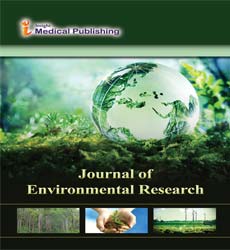Experimental Study and Numerical Simulation of Heat Transfer Performance of Metal Oxides Nano-PCM Applied in Latent Heat Storage System.
Abstract
This paper presents technological and commercial prospects of metal oxides as nano-Phase Change Materials for latent heat storage applications. Both charging and discharging cycles were simulated in a shell-and-tube heat exchanger at controlled temperatures. A horizontal shell-and- tube heat exchanger was fabricated with acrylic shell container and stainless-steel tubes. Paraffin based nano metal oxides were employed for this study. Both charging and discharging performance was investigated at varying of nano additives proportion. Physical model and computational domain were set by choosing phase change temperature, latent heat fusion, density, thermal conductivity, specific heat capacity and volumetric heat capacity. A significant number of nano additives have been studies of which a selection of fourteen nano additives are presented here in terms of their effective thermal conductivity performance with respect to volume concentration. Time step and grid independency tests results in terms of liquid fraction are discussed. Natural convection has demonstrated a significant influence on nano- PCM melting behaviour in a shell container. Peak heat flux showed a corresponding behaviour with an increase in volume concentration. An economic evaluation in terms of commercial significance is presented.
Open Access Journals
- Aquaculture & Veterinary Science
- Chemistry & Chemical Sciences
- Clinical Sciences
- Engineering
- General Science
- Genetics & Molecular Biology
- Health Care & Nursing
- Immunology & Microbiology
- Materials Science
- Mathematics & Physics
- Medical Sciences
- Neurology & Psychiatry
- Oncology & Cancer Science
- Pharmaceutical Sciences
